Blog
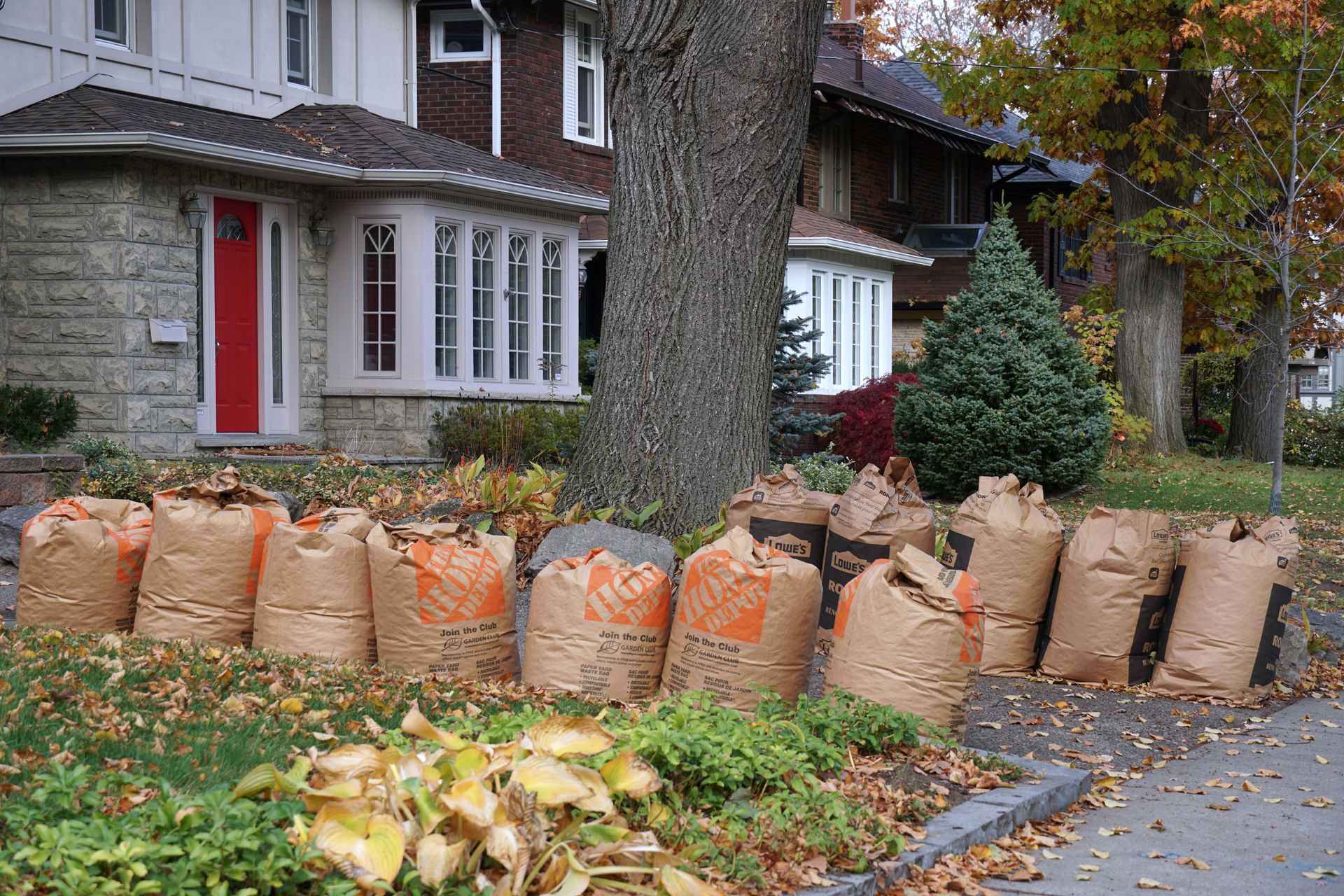
As fall settles over Kansas City, the trees show off their colors — and your lawn shows off their leftovers. Every homeowner faces the same question: what’s the best way to deal with all these leaves? Should you bag them, mulch them, or blow them away? Let’s break down each method so you can choose what’s right for your yard (and your weekend plans).
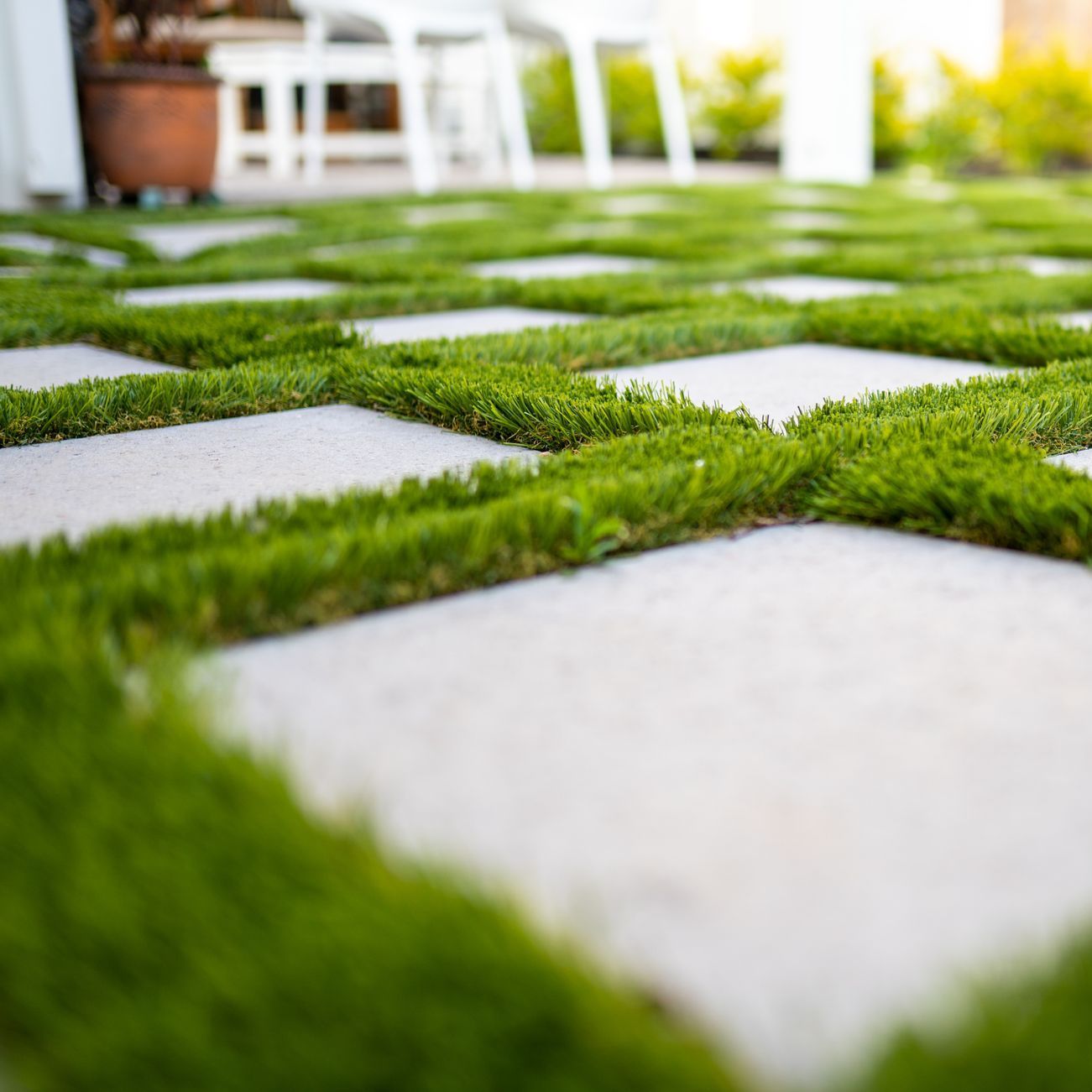
At Quality Lawn & Landscape Bros. in Kansas City, MO, we know that choosing the right pavers can make all the difference in your outdoor space. Whether you're designing a durable driveway, a stylish patio, or a natural-looking walkway, the material you select impacts aesthetics, longevity, and maintenance. Here’s a breakdown of the top five paver types we recommend for Kansas City homeowners, along with their benefits and best uses.
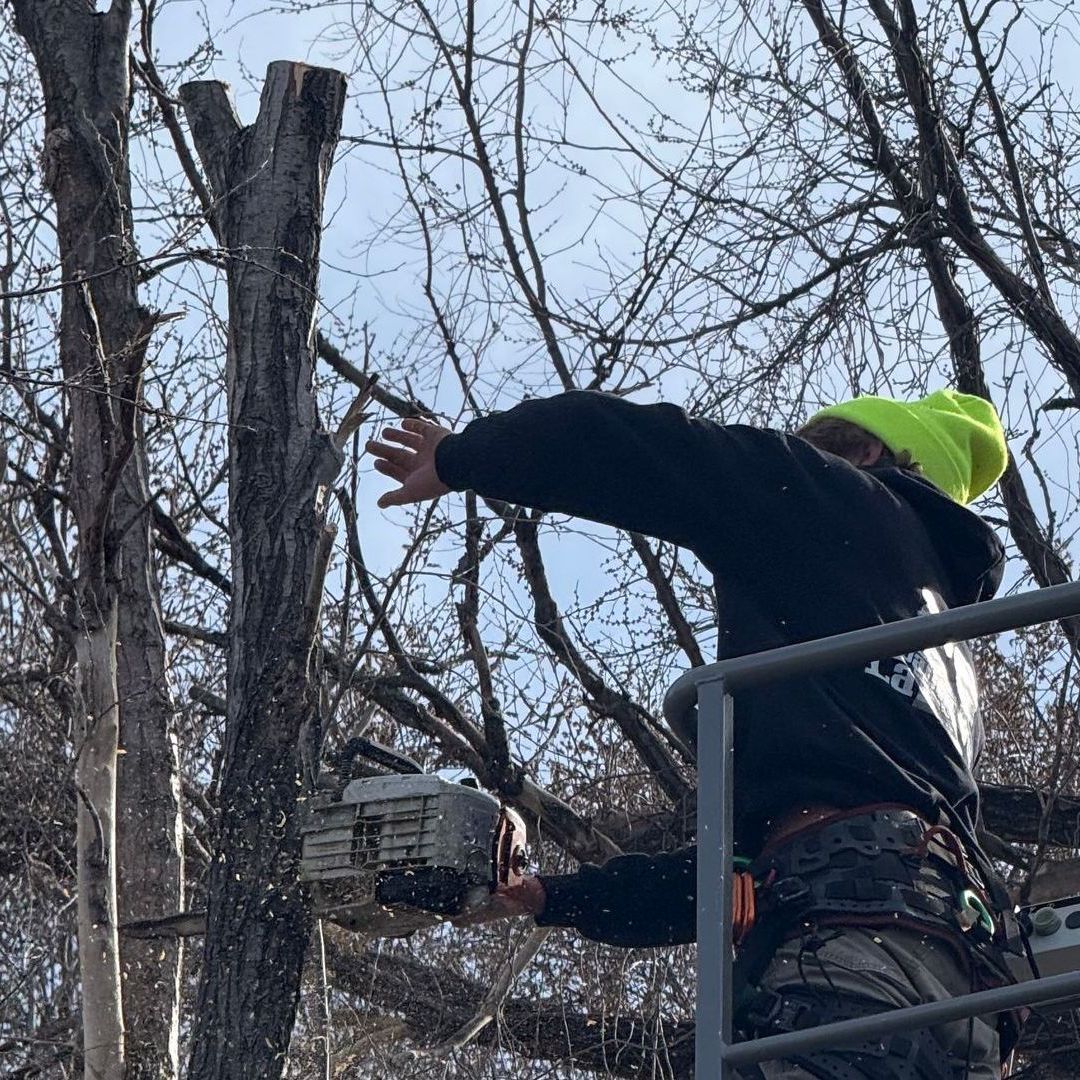
At Quality Lawn and Landscape Bros., we understand the appeal of DIY projects—saving money, learning new skills, and the satisfaction of a job well done. However, when it comes to tree removal in Kansas City, what seems like a cost-saving move can quickly turn into a financial and safety nightmare. Here’s why DIY tree removal often ends up costing more—in money, time, and risk—than hiring a professional team like ours.
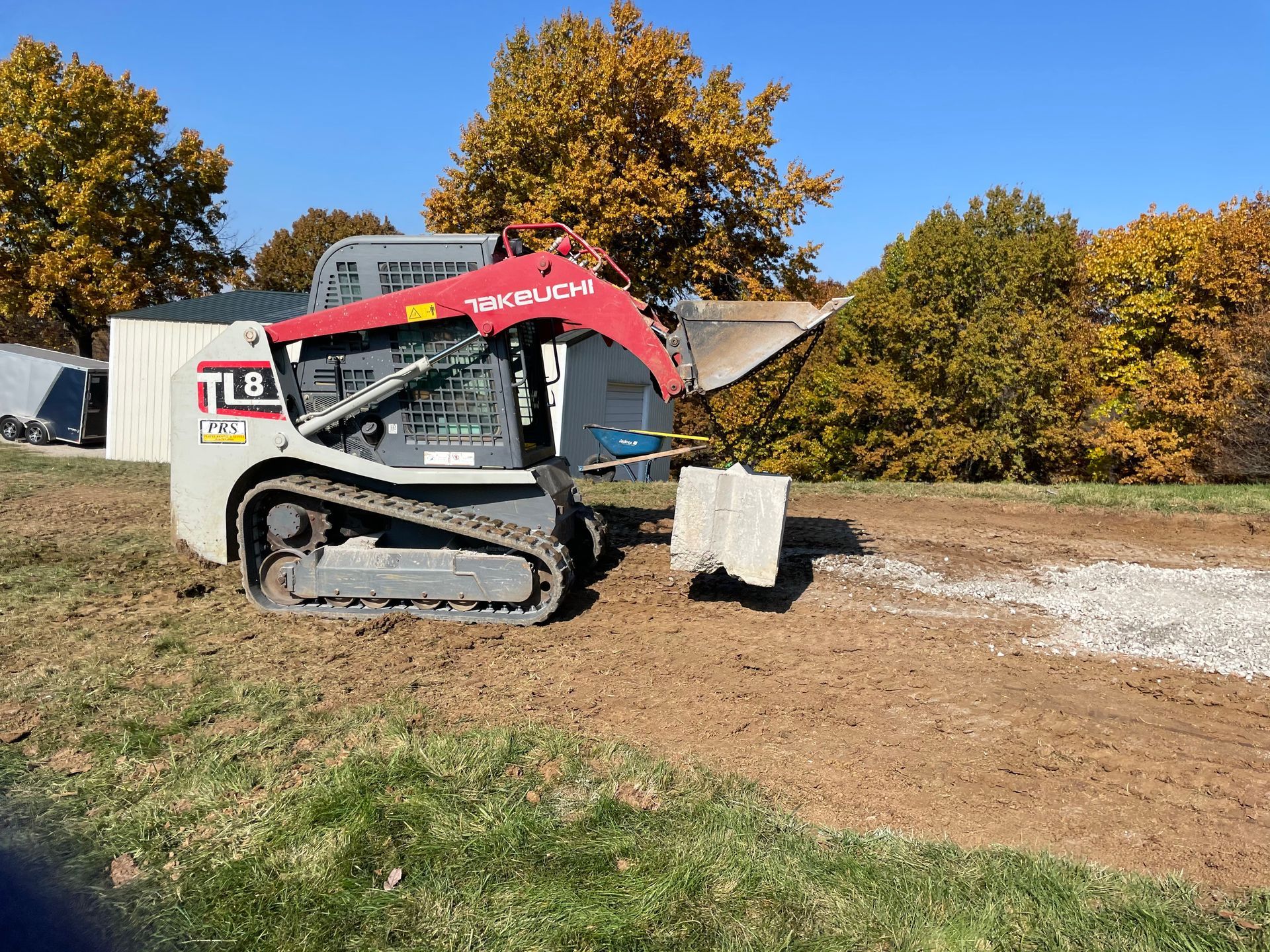
When it comes to designing your dream outdoor space in Kansas City, MO, two key elements come into play: hardscaping and softscaping. Both are essential for creating a balanced, functional, and visually appealing landscape, but they serve different purposes. At Quality Lawn and Landscape Bros., we specialize in both, helping homeowners like you make the best choices for their yards. So, what’s the difference between hardscaping and softscaping, and how do you decide which is right for your property? Let’s break it down.
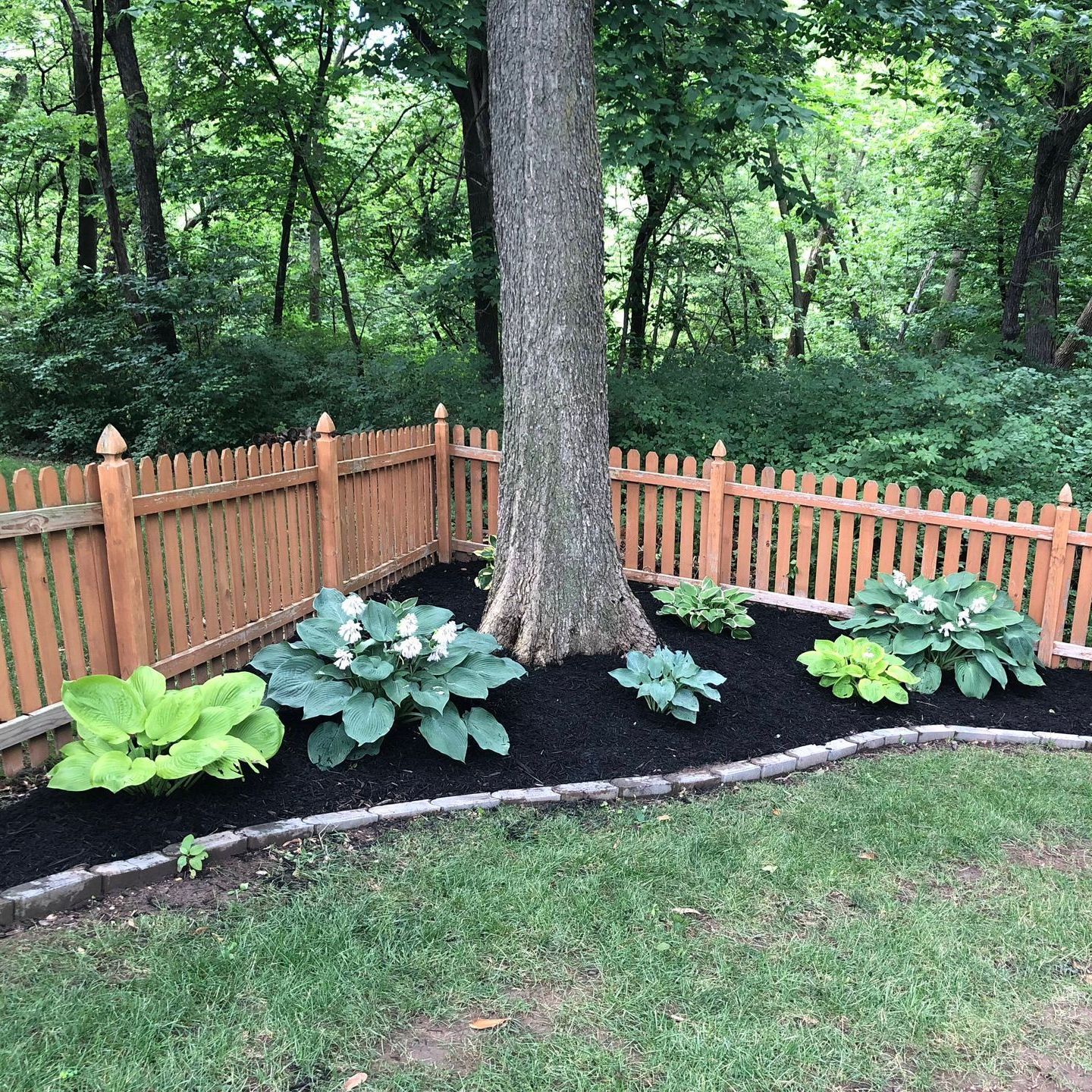
When it comes to maintaining a healthy and beautiful yard in Kansas City, mulching is one of the most effective and affordable solutions. At Quality Lawn and Landscape Bros, we know that mulching isn’t just about aesthetics—it’s a game-changer for your lawn’s health and longevity. Whether you’re a seasoned gardener or a first-time homeowner, here are the top 5 benefits of mulching and answers to some common questions like "how often should you mulch your lawn?" and "what is the best color mulch for landscaping?" 1. Retains Moisture and Regulates Soil Temperature Kansas City summers are known for being hot and humid, which can put stress on your lawn and plants. While the humidity might seem like it’s helping, it often leads to uneven moisture distribution and soil that dries out quickly in the sun. Mulch acts as a protective barrier, locking in moisture and ensuring your plants stay hydrated even during the hottest days. Organic mulch options for lawns, such as wood chips or shredded bark, are especially effective at retaining moisture while also improving soil quality over time. Plus, mulch helps regulate soil temperature, keeping roots cooler in the summer heat and reducing stress on your plants. 2. Suppresses Weeds Tired of battling weeds in your flower beds and around your trees? Mulching is a natural and effective way to prevent weeds from taking over. By blocking sunlight, mulch stops weed seeds from germinating. For best results, spread mulch evenly at a depth of 2–4 inches. Pro tip: "How often should you mulch your lawn?" Typically, refreshing your mulch once a year is enough to keep weeds at bay and maintain its benefits. 3. Enhances Curb Appeal Mulch isn’t just functional—it’s also a fantastic way to boost your home’s curb appeal. A fresh layer of mulch gives your yard a polished, well-maintained look. But "what is the best color mulch for landscaping ?" In Kansas City, darker mulches like black or brown are popular because they contrast beautifully with green plants and flowers. However, red mulch can add a vibrant pop of color to your landscape. 4. Protects Plant Roots Mulching around trees and shrubs is essential for protecting their roots from extreme temperatures. In the winter, mulch acts as an insulator, keeping roots warm during freezing weather. In the summer, it keeps the soil cool and prevents root stress. Plus, mulch helps prevent soil erosion, ensuring your plants stay firmly rooted and healthy. 5. Improves Soil Health Over time, organic mulch breaks down and enriches the soil with nutrients. This natural process improves soil structure, promotes microbial activity, and encourages healthy plant growth. If you’re looking for organic mulch options for lawns, consider materials like compost, straw, or grass clippings. These options are eco-friendly and provide long-term benefits for your yard. Mulching Tips from the Pros At Quality Lawn and Landscape Bros, we want your mulching experience to be seamless. Here are a few expert tips: How to spread mulch evenly: Use a rake or shovel to distribute mulch evenly across your yard. Avoid piling it too high around plant stems or tree trunks, as this can cause rot. Mulching around trees and shrubs: Create a donut-shaped mulch ring around the base of trees and shrubs, leaving a small gap to prevent moisture buildup. Refresh annually: As mentioned earlier, refreshing your mulch once a year ensures it continues to provide maximum benefits. Ready to Transform Your Yard? Mulching is a simple yet powerful way to enhance your Kansas City yard’s health, beauty, and sustainability. Whether you’re tackling the project yourself or need professional help, Quality Lawn and Landscape Bros is here to guide you every step of the way. Contact us today to learn more about our mulching services and let us help you create the yard of your dreams!
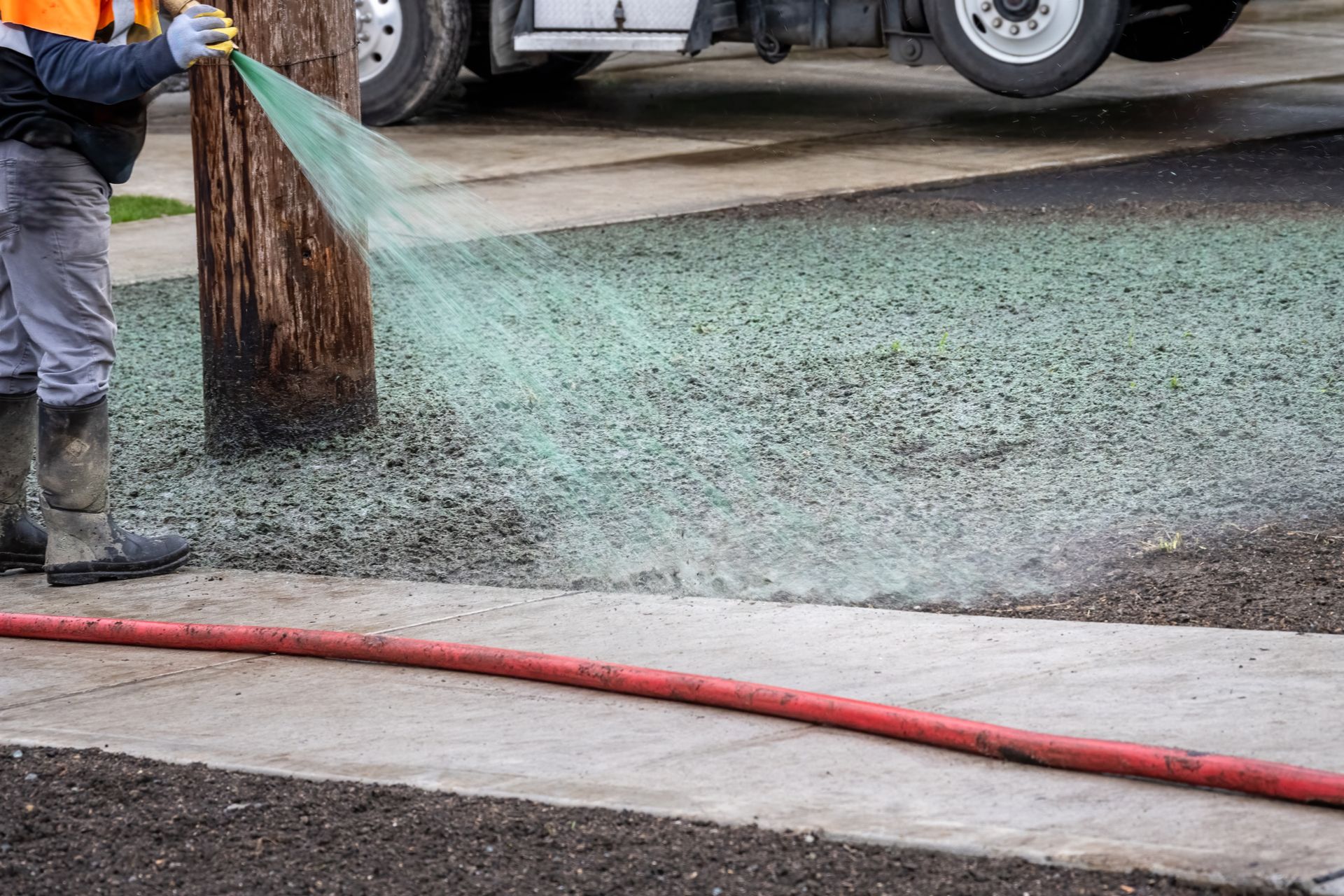
At Quality Lawn & Landscape Bros. in Kansas City, MO, we’re passionate about helping homeowners and businesses make informed decisions about their landscaping needs. If you’ve ever dreamed of a thick, vibrant lawn but aren’t sure how to achieve it, hydroseeding might be the solution you’ve been looking for. In this blog, we’ll explore what hydroseeding is, how it works, and why it’s becoming a popular choice for lawns across the Midwest. What is Hydroseeding? Hydroseeding is an innovative lawn establishment technique that involves spraying a slurry mixture of grass seed, water, mulch, fertilizer, and binding agents onto the soil. This mixture creates the perfect environment for seeds to germinate and grow into a healthy, lush lawn. Unlike traditional seeding methods, hydroseeding ensures even coverage and provides essential nutrients to kickstart growth. It’s particularly effective for large areas, slopes, and hard-to-reach spaces where sod or hand-seeding might not be practical. How Does Hydroseeding Work? The hydroseeding process is straightforward but highly effective. Here’s a step-by-step breakdown: Site Preparation: Before hydroseeding, the soil must be properly prepared. This includes clearing debris, leveling the ground, and ensuring proper drainage. Mixing the Slurry: A specialized mixture is created by combining grass seed, water, mulch, fertilizer, and binding agents. The mulch is often made from recycled materials, making it an eco-friendly option. Application: Using specialized equipment, the slurry is evenly sprayed across the soil. The mixture adheres to the ground, creating a protective layer that retains moisture and promotes seed germination. Watering & Maintenance: After application, regular watering is essential to keep the seeds moist and encourage growth. Proper care during the initial weeks ensures a thick, healthy lawn. Benefits of Hydroseeding Hydroseeding offers numerous advantages over traditional lawn establishment methods. Here are some of the key benefits: Faster Germination: Thanks to the nutrient-rich mixture and moisture-retaining mulch, hydroseeding accelerates the germination process. Homeowners can often see a green lawn in as little as 7–10 days. Cost-Effective: Hydroseeding is more affordable than sod installation, especially for large properties. It delivers beautiful results without the high cost. Erosion Control: The mulch and binding agents in the hydroseeding mixture help stabilize the soil, making it an excellent choice for sloped or uneven terrain. This is particularly important in Kansas City, where heavy rains can lead to soil erosion. Customizable Seed Mixes: Hydroseeding allows for tailored seed mixes to suit specific needs. Whether you’re looking for drought-resistant grass, shade-tolerant varieties, or a mix that thrives in the Midwest climate, hydroseeding can be customized to meet your goals. Eco-Friendly: Hydroseeding is an environmentally friendly option. The mulch is often made from recycled materials, and the process uses less water than traditional seeding methods. Is Hydroseeding Right for You? Hydroseeding is an excellent choice for homeowners and businesses looking for a cost-effective, efficient, and eco-friendly way to establish a lush lawn. It’s particularly well-suited for: Large properties Sloped or uneven terrain Areas prone to erosion Projects where quick results are desired However, like any landscaping method, hydroseeding requires proper preparation and maintenance to ensure success. If you’re considering hydroseeding for your property, it’s important to work with experienced professionals who understand the process and can guide you through the steps. Trust Quality Lawn & Landscape Bros. for Expert Landscaping Advice At Quality Lawn & Landscape Bros., we’re committed to helping Kansas City homeowners and businesses make the best decisions for their landscaping needs. While we don’t offer hydroseeding services, we’re here to provide expert advice and high-quality landscaping solutions to keep your property looking its best. If you have questions about lawn care, landscaping, or other outdoor projects, don’t hesitate to reach out to our team. We’re here to help you create the outdoor space of your dreams! Call us at 816-323-8173 or visit our website here to learn more about our services. Let’s work together to make your lawn the envy of the neighborhood!
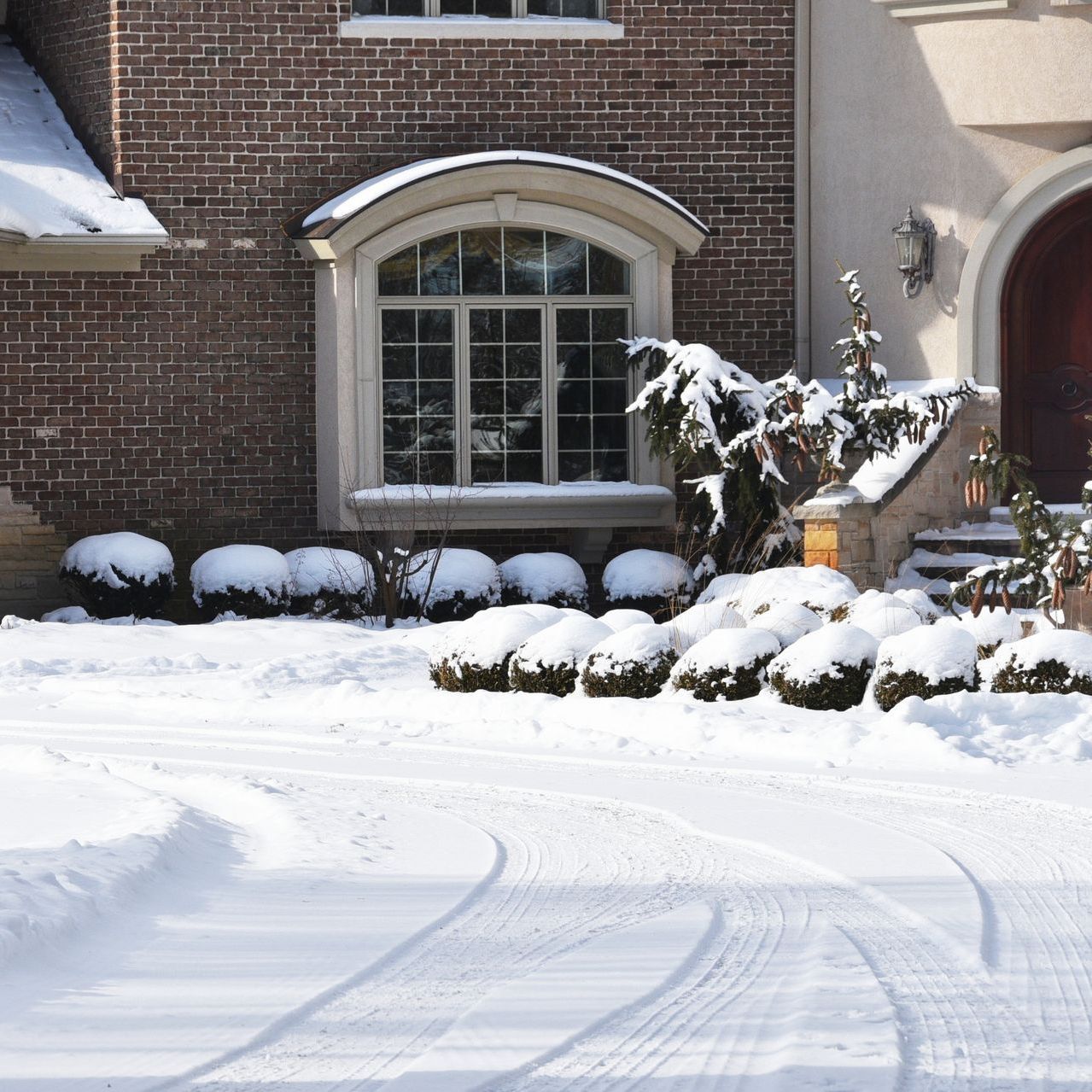
While winter blankets your property in snow and ice, it can also present challenges for your landscaping. Shrubs, trees, and lawns can suffer damage from heavy snow, freezing temperatures, and the chemicals in de-icing materials. The good news is that with a little preparation, you can protect your landscape from winter’s harshest conditions. Here are tips to ensure your outdoor spaces thrive through the cold months and greet spring with vigor. Selecting and Planting Hardy Varieties The foundation of a resilient landscape starts with selecting plants that are well-suited to your climate zone. Shrubs, trees, and grass varieties that are hardy in your region are naturally equipped to withstand freezing temperatures and heavy snow. Know Your Zone: Reference the USDA Plant Hardiness Zone Map to identify the plants best suited for your area. Native species are often a smart choice, as they’re adapted to local environmental conditions. Plan Smart Planting: Position plants in spots that offer some natural protection, like near a building or taller trees, to shield them from harsh winds. Timing Is Key: Plant in the early fall to give roots time to establish before the ground freezes. By starting with plants that suit your climate, you lay the groundwork for a healthier, easier-to-maintain winter landscape. Pruning and Protective Coverings Proper preparation goes a long way in shielding your shrubs and trees from snow damage. Prune in the Fall: Trim away weak, overhanging, or damaged branches that could break under the weight of snow. This not only protects your plants but also prevents potential damage to your home and landscape. Install Burlap or Covers: Wrap shrubs and small trees in burlap or similar protective materials. These coverings shield plants from heavy snow and freezing winds that dry out and harm them. Ensure the coverings are secure but allow some airflow to prevent moisture buildup, which can lead to disease. Simple steps like pruning and wrapping give your plants a much better chance of enduring the season unscathed. Mulching and Shoveling Techniques Protecting the base and roots of your landscaping is just as important as caring for branches and leaves. Apply Mulch: Spread a layer of mulch around the base of trees and shrubs to insulate the soil. This prevents frost heave, where freezing and thawing cycles push roots upward, potentially causing damage. Shovel with Care: Avoid piling snow directly on shrubs and tree trunks, as the weight can bend or break branches. Shovel snow gently away from the base of your plants to reduce stress and ensure they stay upright. With proper mulching and snow shoveling, you can guard your plants’ root systems and structural integrity even on the snowiest days. De-Icing with Care De-icing materials keep walkways safe, but they can wreak havoc on your landscaping if used carelessly. Understand the Risks: Traditional de-icing salts can leach into soil and damage plant roots, causing stunted growth or death. Choose Alternatives: Use sand, kitty litter, or calcium magnesium acetate as safer options for de-icing. These materials are less harmful to plants while still providing traction for icy surfaces. Apply Sparingly: If you do use salt, apply it sparingly and make an effort to keep it away from grass, shrubs, and trees. Once the season passes, water the area thoroughly to flush out residual salt from the soil. Being mindful of de-icing practices can protect your landscaping from long-term damage. Safeguard Your Landscape This Winter Winter doesn’t have to be the enemy of your landscaping. By selecting the right plants, pruning and wrapping vulnerable plants, insulating soil with mulch, shoveling snow carefully, and using de-icing products thoughtfully, you can ensure your shrubs, trees, and lawn survive—and thrive—until spring. Do you have any tried-and-true tips for protecting your landscaping from snow and ice? Share your thoughts and experiences in the comments below! For more seasonal gardening tips, subscribe to our emails by filling out the form on our website and follow us on social media to stay updated. Together, we can ensure your landscape looks stunning year-round!
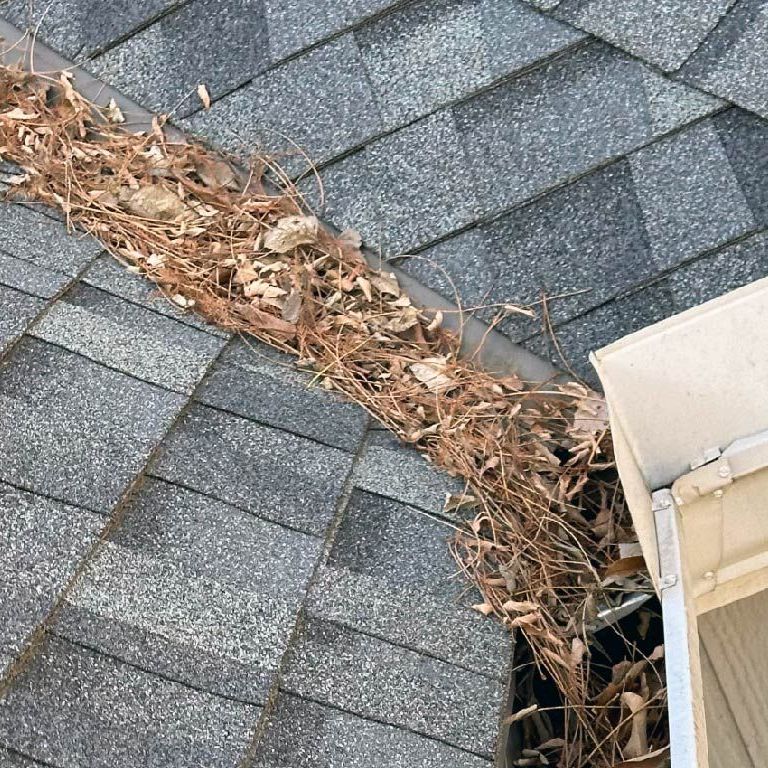
Gutter Cleaning Secrets Every Homeowner Should Know Gutters may not be the most glamorous part of home ownership, but they're undeniably important. These humble channels safeguard your property from water damage by directing rainwater away from the foundation. Yet, many homeowners overlook gutter maintenance, assuming it's a task that can be put off. This blog will explore why regular gutter cleaning should be a priority for every homeowner and property manager. From identifying signs that your gutters need attention to weighing the benefits of professional versus DIY cleaning, this comprehensive guide will help you make informed decisions. Let's discover why annual gutter cleaning might be the best investment for your home's longevity and safety. Recognizing When Your Gutters Need Attention At first glance, gutters might appear to be doing their job just fine. However, there are telltale signs that indicate they need cleaning. One of the most obvious signs is water spilling over the edges during rainfall. This overflow can cause serious damage to your home's foundation over time. Additionally, if you notice sagging or pulling away from the house, it's likely that debris has built up, adding unnecessary weight. Another sign to watch for is the presence of birds or pests around your roofline. They might be attracted to the standing water or debris in your gutters, creating nesting sites. Finally, if you notice peeling paint or rust marks on your gutters, it could indicate that water has been standing too long, leading to corrosion. By keeping an eye out for these signs, you can prevent minor issues from escalating into major repairs. The Impact of Clogged Gutters on Your Home Clogged gutters can have a domino effect on various parts of your home. When gutters overflow, water can seep into the foundation, causing cracks and structural issues. This can lead to costly repairs that could have been avoided with regular maintenance. Furthermore, water damage isn't limited to the foundation. It can also affect your roof and fascia boards, leading to rot and deterioration. Inside your home, blocked gutters can result in water leaks that damage walls and ceilings. Mold and mildew thrive in damp environments, posing health risks to your family. Additionally, standing water in gutters can become a breeding ground for mosquitoes and other pests. By understanding the potential consequences of neglecting gutter maintenance, you'll be more motivated to keep them clean and functional. Advantages of Regular Gutter Cleaning Regular gutter cleaning offers numerous benefits beyond preventing damage. One of the primary advantages is extending the lifespan of your gutters. By removing debris and ensuring proper water flow, you'll minimize wear and tear. Clean gutters also enhance your home's curb appeal, giving it a well-maintained appearance. Additionally, regular maintenance helps preserve the surrounding landscape. When gutters are clear, rainwater is directed away from flower beds and shrubs, preventing erosion and damage to plants. Lastly, clean gutters contribute to your home's overall value. Potential buyers are more likely to invest in a property that's been well cared for, making regular gutter cleaning a wise investment. How Often Should You Clean Your Gutters? The frequency of gutter cleaning depends on various factors, including your location and the surrounding environment. In general, it's recommended to clean gutters at least twice a year—once in the spring and again in the fall. Spring cleaning ensures that any debris accumulated over the winter is removed, while fall cleaning prepares your gutters for the upcoming winter. However, if you live in an area with a lot of trees, more frequent cleaning may be necessary. Leaves and branches can quickly clog gutters, especially during the autumn months. Additionally, if you experience heavy rainfall or storms, checking your gutters afterward is a good idea. By tailoring your gutter cleaning schedule to your specific needs, you'll ensure optimal performance throughout the year. DIY Gutter Cleaning versus Professional Services When it comes to cleaning your gutters, you have two main options: doing it yourself or hiring a professional. DIY gutter cleaning can be cost-effective, but it requires time, effort, and most importantly, safety precautions. Climbing ladders and working at heights can be risky, so it's essential to have the right equipment and a steady hand. On the other hand, professional gutter cleaning services offer convenience and expertise. Professionals have the tools and experience to thoroughly clean and inspect your gutters for any potential issues. While there's a cost involved, the peace of mind and time saved can be worth the investment. Ultimately, the choice between DIY and professional cleaning depends on your comfort level and availability. Keeping Your Gutters Clean for a Healthier Home Regular gutter maintenance is a small effort that yields significant rewards. By ensuring your gutters are clean and functional, you're protecting your home's foundation, preventing water damage, and maintaining its value. Whether you choose to clean them yourself or hire professionals, the key is consistency. Make gutter cleaning a regular part of your home maintenance routine to enjoy a safer and healthier living environment. For those who want to learn more about the importance of gutter maintenance and explore additional resources, consider giving us a call at 816-323-8173. We are experts in gutter cleaning and all things lawn and landscaping! Staying informed and proactive will help you keep your home in top condition for years to come. To learn about other lawn care tips, continue reading our other blog articles.

Halloween is creeping up, and what better way to get into the spirit than turning your lawn into a spine-tingling spectacle? With DIY Halloween decorations gaining popularity, homeowners are transforming their outdoor spaces to rival professional setups. This blog post is your ultimate guide to crafting eerie and festive lawn decorations that will delight trick-or-treaters and impress your neighbors. Read on to discover how to create jaw-dropping Halloween décor that reflects your style and DIY prowess. Bringing the Community Together with Lawn Decorations Lawn decorations do more than just spook and delight—they bring people together. During Halloween, neighborhoods come alive with creative displays that foster a sense of community and shared excitement. Whether it's kids marveling at your ghostly setups or adults appreciating your artistry, your home becomes a hub of Halloween cheer. By extending your decor from inside to out, you create a cohesive experience that captures the essence of the holiday. Choosing Your Halloween Theme Before you start crafting, consider the theme that will guide your Halloween decorations. Popular themes range from classic horror to whimsical fantasy, allowing you to choose a style that fits your personality and skill level. Are you drawn to eerie graveyards or enchanting fairy tales? Selecting a theme not only streamlines your creative process but also ensures your decorations tell a compelling story. Gathering Materials and Tools To bring your Halloween vision to life, you'll need the right materials and tools. Stock up on essential items like black and orange lights, fabric for ghostly figures, and faux spider webs. Don't forget basic tools such as scissors, glue guns, and paintbrushes. For those looking to push creative boundaries, consider unique materials like glow-in-the-dark paint and motion sensors to add an extra layer of spookiness to your setup. Step-by-Step Guides for Spooky Creations Ghostly Pathway Lights Illuminate your walkway with ghostly figures that guide visitors to your door. Using white sheets or gauzy fabric, create simple ghost shapes, attaching them to stakes that line your path. Add LED lights inside each ghost for an ethereal glow. To ensure durability, secure the fabric well and use weather-resistant lights. Spiders and Spider Webs Nothing says Halloween like giant spiders lurking in oversized webs. Craft your spiders using foam balls and pipe cleaners, and create webs with stretchy cotton. Drape the webs over bushes and fences for a chilling effect. Remember to anchor your webs so they withstand wind and rain. Jack-o'-Lantern Displays Carve or paint pumpkins in various sizes and styles to create an eye-catching display. Arrange them on steps or around your porch to welcome guests with a flickering glow. For longevity, consider using artificial pumpkins that won't rot through the season. Haunted Graveyard Scenes Transform your lawn into a chilling graveyard with tombstones made from foam or wood. Add eerie touches like skeletal remains and fog machines for atmosphere. Position your tombstones creatively for a realistic effect, and secure them to avoid tipping. Ensuring Safety for All Safety should be top of mind as you design your Halloween setup. When working with tools and electrical components, always prioritize safe practices. Anchor decorations securely to prevent accidents, and ensure paths are clear for trick-or-treaters. Highlight potential hazards to keep your display both spooky and safe. Enhancing with Lighting and Sound Elevate your decorations with atmospheric lighting and sound effects. Use string lights, spotlights, and lanterns to highlight key features. Consider motion-activated sounds for a surprise scare or ambient music to set the mood. Be mindful of your neighbors when choosing volume levels. Perfecting Your Display Setup For maximum impact, plan the layout of your decorations thoughtfully. Test your setup before Halloween night to ensure everything works smoothly. Consider visibility from the street and pathways to guide visitors through your spooky scene. A well-arranged setup enhances the overall effect of your decorations. Engaging the Community Your decorations can become a focal point for community engagement. Invite neighbors to contribute or collaborate on their setups, creating a cohesive neighborhood theme. Share photos and progress updates on social media to inspire others and build excitement. Use hashtags to connect with fellow Halloween enthusiasts far and wide. Reflecting on the Joy of DIY Halloween Decor Crafting your own Halloween decorations is a rewarding endeavor that combines creativity, community, and celebration. By following this guide, you're not only creating stunning visuals but also participating in a beloved tradition that brings joy to many. We encourage you to share your creations and tips with others, keeping the spirit of Halloween alive. Thank you for joining us on this spooky DIY adventure! We invite you to share this blog post with fellow Halloween fans and subscribe for more seasonal guides. Let's make this Halloween the most memorable one yet!


